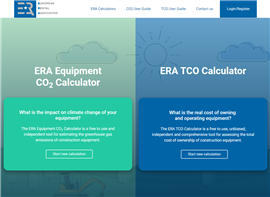AI could help reduce building emissions
10 August 2021
Algorithm can predict energy rates in a split second, potentially improving design and renovation
 The new AI system can give insights into how buildings could be better designed
The new AI system can give insights into how buildings could be better designed
A newly-developed artificial intelligence (AI) system can predict the energy rates of non-domestic buildings in less than a second.
The system could also give an insight into how future buildings such as offices, factories, schools, restaurants, hospitals, and cultural institutions should be designed and built and how to renovate existing buildings for optimum efficiency.
The AI model was developed by Dr Georgina Cosma and postgraduate student Kareem Ahmed of Loughborough University, who tested their algorithm against over 81,000 real data records for buildings in England.
The information incorporated into the calculations included building capacity, location, heating and cooling, lighting and activity.
The AI negates the need for hours or even days of calculations traditionally required to achieve an energy performance certificate (EPC), but could also have uses in helping to reduce the CO2 of new and renovated buildings.
Dr Cosma said, “It’s an important first step towards the use of machine learning tools for energy prediction…and it shows how data can improve current processes in the construction industry.”
The project was supported by engineering consultancy Cundall’s head of research and innovation, Edwin Weelend. He said, “By predicting the energy consumption and emissions of non-domestic buildings quickly and accurately, we can focus our energy on the more important task – reducing energy consumption and reaching net-zero.”
Bridging loan brokers Hank Zarihs Associates said development finance lenders would be keen to offer construction loans to SME builders who embraced green design innovation, such as the new AI system.
STAY CONNECTED



Receive the information you need when you need it through our world-leading magazines, newsletters and daily briefings.
CONNECT WITH THE TEAM








